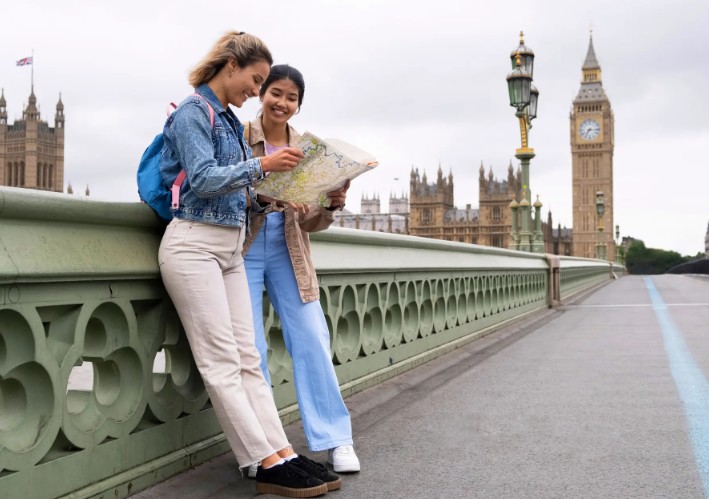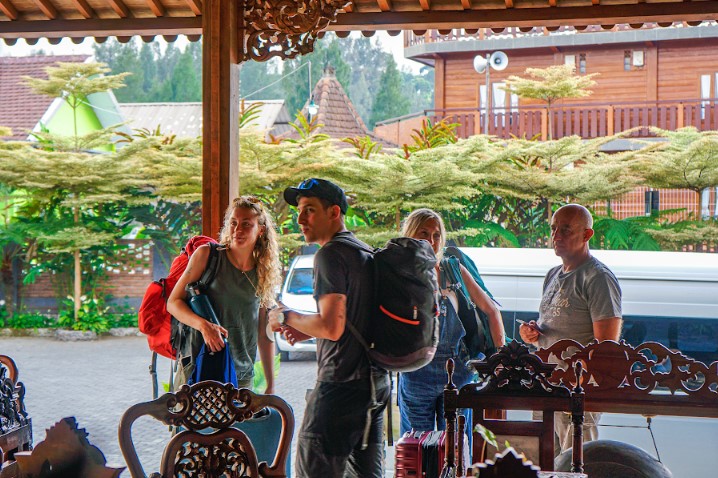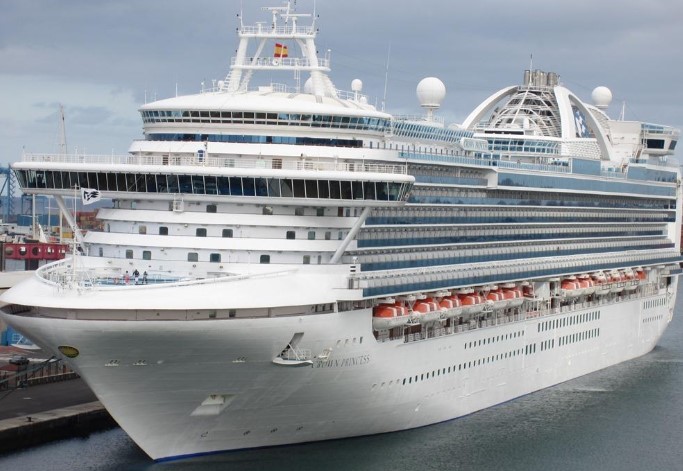Moments after the Australian government announced that it would reopen the country’s borders to international travelers later this month, Emily Barrett locked in a fare for a flight to Sydney. The 32-year-old nanny from Palo Alto, Calif., spent three days researching and talking to Australian friends before she decided to book her trip to the island continent, which for two years had some of the world’s strictest border controls and longest lockdowns aimed at controlling the spread of the coronavirus.
“They all said, ‘if we go back into a lockdown now, people will go into the streets,’” she said. Her two-week trip is scheduled to start a few days after the border opens on Feb. 21.
Potential travelers and tourism operators alike are cautiously optimistic about the reopening of “Fortress Australia,” but many wonder if the isolated nation’s ongoing Covid restrictions — such as vaccine and testing requirements, as well as mask mandates — will make the return of international travel more of a trickle than a splash. Australia’s reputation for rigidity and reclusiveness during the pandemic — at odds with the inviting, easygoing nature portrayed by the country’s tourism boards — may also be a hurdle to overcome.
“There is no doubt that a full recovery will take time, but we are confident that the demand for Australia is strong,” said Phillipa Harrison, the managing director of Tourism Australia, the country’s tourism board.
Tourism was one of the fastest growing sectors in Australia’s economy before the pandemic, contributing 45 billion Australian dollars in 2019, or $32 billion.
Australia is among the world’s most immunized countries for Covid-19, with 94 percent of people over 16 fully vaccinated. Through 2020 and 2021, the country pursued a tough “zero Covid” strategy that closed national and state borders; restricted Australians from returning home and even leaving; enforced monthslong lockdowns and required its few visitors to undergo expensive hotel quarantines. Surging cases of the Omicron variant of the coronavirus in January, which persist, but have since declined, tipped most of the country into a new ‘living with the virus’ phase.
“It’s about coming back so the virus is under our control, whereas we felt that the virus was controlling us,” said Catherine Bennett, an epidemiologist at Deakin University in Melbourne, adding that opening the borders represented a turning point. “This is saying: We’re ready for this.”
Australia’s walls come down
Australia’s grand reopening comes with a few ground rules. Travelers entering the country must be fully vaccinated to avoid a costly two-week hotel quarantine, and must test before arrival — somewhat common requirements for travel now.
But it will take a little more time for Australia’s welcome mat to roll out all the way. The entire state of Western Australia — a third of Australia’s vast land mass, but home to just 10 percent of the population — has essentially been closed to both international travelers and even vaccinated Australian citizens for most of the pandemic. It plans to reopen to vaccinated travelers on March 3, with testing rules on arrival. The state, which has reported about 2,900 total cases and 10 deaths since the pandemic began, is home to Perth — one of the world’s most remote major cities — more than 7,000 miles of coastline, the Kimberley region’s dramatic sandstone gorges and wine destinations like Margaret River. While the federal government can open the nation’s borders, the states can still set their own Covid restrictions, including entry rules.
“We desperately want people to come back,” said Graeme Skeggs, a general manager at Adam’s Pinnacle Tours, one of Western Australia’s larger tour companies, which, until the pandemic, operated luxury tours of the state’s renowned coastlines and landscapes. Much of their business evaporated after Covid struck, and some smaller operators the company worked with have closed. “Two years is a lot longer than any of us thought,” Mr. Skeggs said.
While many operators who rely on foreign tourists are hopeful, it’s clear that there is no simple return to prepandemic times.
China overtook New Zealand as Australia’s largest foreign tourist market for the first time in 2017, and 1.3 million visitors from mainland China spent more than $12 billion Australian dollars, or nearly $9 billion, in 2019, about 27 percent of the year’s international visitor spend.
With China still severely limiting outbound travel, that leaves a gaping hole in Australia’s tourism economy.
Michelle Chen opened the Apollo Surfcoast Chinese Restaurant in 2012 along Victoria’s Great Ocean Road — one of the state’s major scenic attractions, about a 2.5-hour drive from Melbourne — to cater to the hundreds of Chinese day-trippers who would stream off buses each day on their way to view the Twelve Apostles, a limestone rock formation farther down the coast.
When Australia closed to Chinese travelers on Feb. 1, 2020, she lost “nearly a hundred percent” of her business. In another stroke of misfortune, the restaurant burned down in April of last year. She reopened in December a few doors down. But Ms. Chen is not expecting her core customers to return for a long time.
She’s even revamped her menu, which used to feature dishes like Sichuan chile chicken that appealed to mainland Chinese visitors. Now the menu is “80 percent Australian-Chinese,” Ms. Chen said, with milder offerings like Mongolian beef. “I find I can’t sell the Chinese-Chinese dishes.”
Another thing desperately she’s looking forward to with the return of international travel: more workers. “Everywhere is shortage of labor,” she said.
The Djokovic drama
In January, the Australian Open — one of the country’s biggest sporting events, which draws hundreds of millions of viewers annually — became a media circus when Novak Djokovic, the world’s number one men’s tennis player, who is not vaccinated, was detained and finally deported from Melbourne because of his risk for “civil unrest.” The drama, which stretched on for 10 days, triggered protests in Australia from groups who believed the battle was the latest example of Covid-related mandates trampling public freedoms.
“Strong borders are fundamental to the Australian way of life,” the country’s prime minister, Scott Morrison, said after the decision to cancel the tennis star’s visa.
Australia’s fixation with border security is highly contentious within the country, particularly its harsh treatment of asylum seekers, but ultimately plays well with voters. But how would Mr. Djokovic’s unceremonious booting fit into Australia’s new “come on in” narrative?
“From our view, it really highlights the strength of Australia’s border policies,” said Chris Allison, Tourism Australia’s acting manager of the Americas. While Mr. Djokovic’s treatment was divisive, he said, it showed that “Australia has zero tolerance in terms of requiring vaccinations to come into the country,” and affirms the message of “how we’re trying to reopen our borders safely and protect the health of the nation.”
But time — and bookings — will tell if long-haul travelers are willing to bet on Australia’s reopening.
Some prefer to wait and see. Australia was where “everyone wanted to go” before the pandemic, said Samantha Carranza, a manager at Sky Tours, a travel agency in downtown Los Angeles. But “there isn’t much demand right now,” she said, adding that Australia’s protectiveness has made her clients cautious to travel there. “No one’s sure if it’s really open or not. Will it close again, will they get stuck there?”
Travel Trends That Will Define 2022
Looking ahead. As governments across the world loosen coronavirus restrictions, the travel industry hopes this will be the year that travel comes roaring back. Here is what to expect:
The data shows that interest in travel to Australia is already on the rise: Flight bookings were up 200 percent following the border-opening announcement compared to the week before, according to Forward Keys, a travel analytics company.
“While the immediate jump in bookings is encouraging, the overall booking volume compared to the equivalent week in 2019 is modest,” said Olivier Ponti, the firm’s vice president of insights.
“I imagine there will be more and more confidence over the course of the year,” said Christie Hudson, a senior public relations manager at Expedia, the major online travel agency. “People are really ready to start thinking about these bucket-list trips again. I think for a lot of Americans, Australia is a bucket-list-type trip.”
Opening Aboriginal Australia to the world, cautiously
Cultural experiences led by Australia’s diverse Indigenous groups will be a focus of marketing to overseas travelers, according to Tourism Australia. But in the Northern Territory, the region with the highest proportion of Indigenous people, many remote communities are barred to outsiders until at least March 3 in an effort to protect the residents there from infection.
International visitors are key for the region’s Indigenous tourism sector: Before the pandemic, nearly 70 percent of overseas visitors to the Northern Territory engaged in Aboriginal tourism activities, compared to 16 percent of Australian tourists.
Victor Cooper, who owns and operates Ayal Aboriginal Tours in Kakadu National Park, said he used to welcome visitors from Europe and the United States to his “grandmother’s country,” where he taught them about bush tucker (native foods) and told traditional stories of the land.
“I had a really, really good thing in the overseas market, it took a long time to get that,” Mr. Cooper said. He has not had any overseas bookings since the reopening announcement, and worries things may be “complicated” for a while yet. “I don’t think I’m going to get the clients I used to have back in 2019.”
Other tourism operators are already seeing signs of recovery, which gives them hope for a better year ahead.
“It’s good to see people again,” said Dave Gordon, an employee at Wake Up Bondi, a hostel on Sydney’s famous beach, of the limited number of travelers who have been filtering back in recent months. “It’s exciting.”
Since the news of the border reopening, booking numbers for later in the year have risen, he said.
The first year of the pandemic was “quite a struggle,” he said. To survive, the hostel, which is on Bondi Beach’s main thoroughfare, slashed its rates and accepted longer-term lodgers, and even closed for a period.
But the border opening removes a major hurdle for him and other operators across the country, who want to convey a clear message for would-be tourists thinking of Australia: “Come!” he said. “This is the time to travel.”
Follow New York Times Travel on Instagram, Twitter and Facebook. And sign up for our weekly Travel Dispatch newsletter to receive expert tips on traveling smarter and inspiration for your next vacation. Dreaming up a future getaway or just armchair traveling? Check out our 52 Places for a Changed World for 2022.






More Stories
How to Pack for the UK Weather (Yes, Even in July!)
An Entrepreneur’s Guide To Responsible Travel
Important Updates on Passport Processing